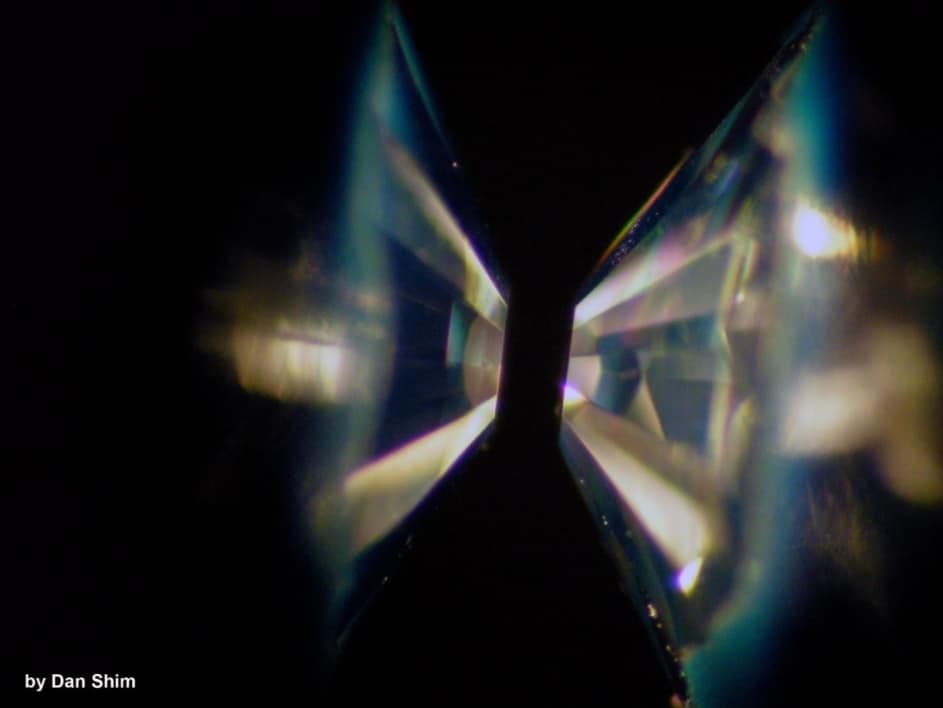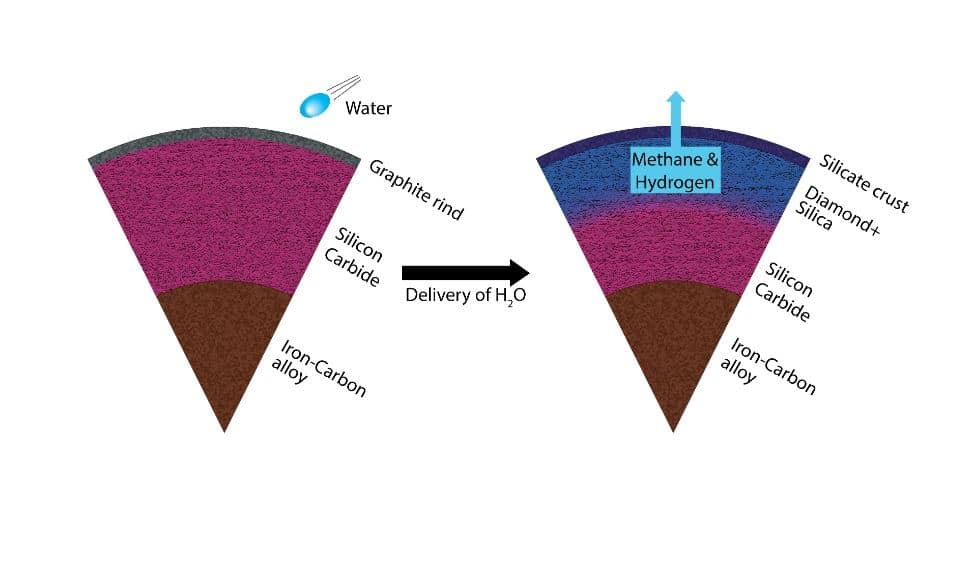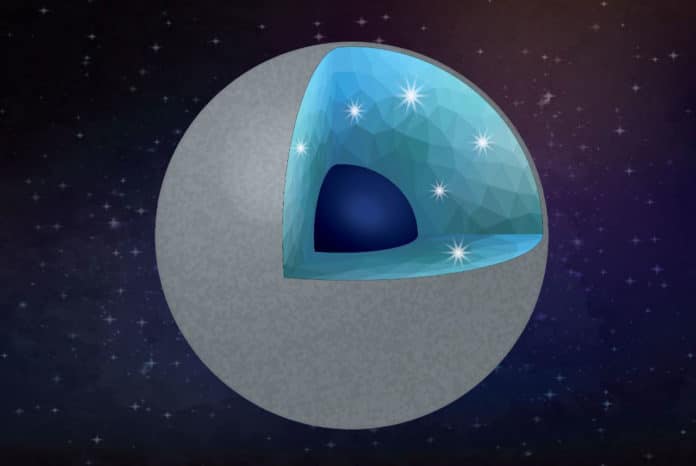Using data from NASA’s Hubble Space Telescope, TESS, and Kepler, scientists continually gather information on exoplanets- their composition and structure habitability.
In a new study, scientists from Arizona State University (ASU) and the University of Chicago determined that some carbon-rich exoplanets could be made of diamonds and silica.
Exoplanets with a higher carbon to oxygen ratio than our sun are more likely to be carbon-rich. According to scientists in this study, such carbon-rich exoplanets could convert to diamond and silicate if water were present, creating a diamond-rich composition.

Scientists tested their theory by creating the resemblance of carbide exoplanets’ interior using high heat and high pressure, at co-author Shim’s Lab for Earth and Planetary Materials. To do so, they used high-pressure diamond-anvil cells.
In the beginning, they immersed silicon carbide in water and compressed the sample between diamonds to very high pressure. Then, to monitor silicon carbide and water reaction, they conducted laser heating at the Argonne National Laboratory in Illinois, taking X-ray measurements while the laser-heated the sample at high pressures.
As they predicted, with high heat and pressure, the silicon carbide reacted with water and turned into diamonds and silica.

Lead author Harrison Allen-Sutter of ASU’s School of Earth and Space Exploration said, “Regardless of habitability, this is one additional step in helping us understand and characterize our ever-increasing and improving observations of exoplanets. The more we learn, the better we’ll be able to interpret new data from upcoming future missions like the James Webb Space Telescope and the Nancy Grace Roman Space Telescope to understand the worlds beyond on our solar system.”
Till now, life on another planet has not been detected yet, but the search continues.
Journal Reference:
- H. Allen-Sutter et al., Oxidation of the Interiors of Carbide Exoplanets, The Planetary Science Journal (2020). DOI: 10.3847/PSJ/abaa3e
